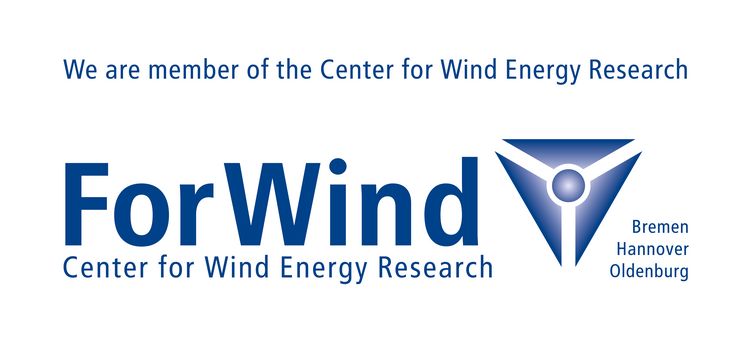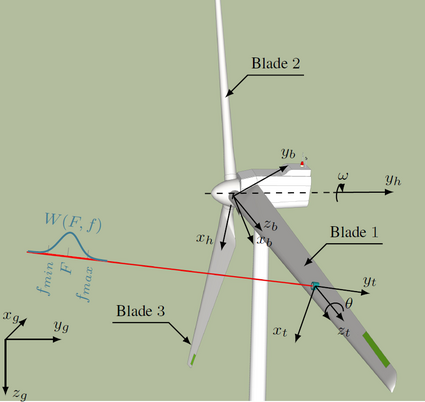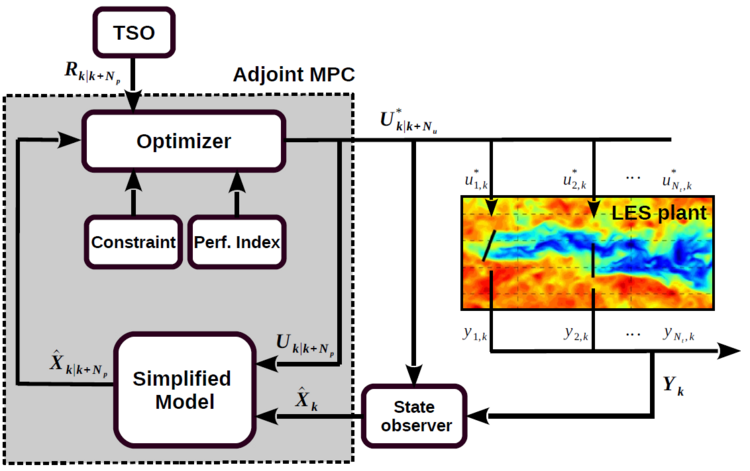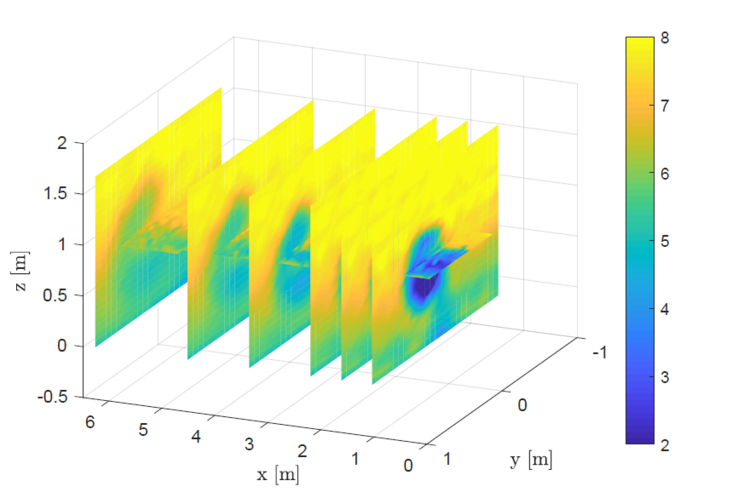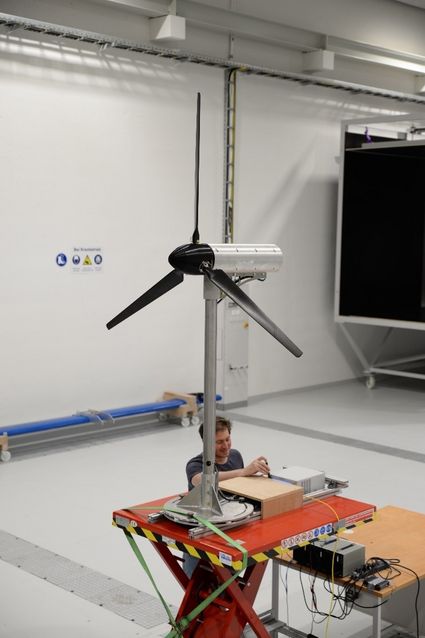Turbine and Windfarm Control
Contact
University of Oldenburg
Institute of Physics - ForWind
Dr. Vlaho Petrovic
Küpkersweg 70
D-26129 Oldenburg
Tel: +49 (0)441 / 798-5062
Email: vlaho.petrovic@uol.de
Turbine and Windfarm Control
Wind turbine control concepts
The dimensions and the rated power of wind turbines have been continuously increasing over the last decades in an attempt to make wind turbines more cost-efficient, which should result in a lower cost of wind energy. However, one of the main obstacles for further increase of wind turbine dimensions are the high structural loads. Therefore, load reduction is an important focus of our research activities in the area of wind turbine control.
The development of control strategies for load reduction is performed in two ways:
- development of new control algorithms based either on individual pitch control or on the mitigation of blade and tower motion,
- analysis and utilisation of novel concepts, such as smart blades with active flaps or slats, and lidar-assisted control.
Wind farm control concepts
As a wind turbine extracts energy from the wind, its wake is characterised with lower wind speeds and higher turbulence levels, resulting in lower power production and higher loading of downwind wind turbines. Modern wind farms typically use very simple control strategies that do not consider the interaction between wind turbines. However, by doing so, the development of a suitable controller could increase the energy capture, reduce structural loads, and improve wind energy integration in the power grids. Our main research objectives are:
- Development of wind farm and wake models, which are simple enough to be used for controller design, yet detailed enough to be able to capture relevant physical phenomena.
- Development of control algorithms that consider the interaction between wind turbines and are capable of dynamically reacting to changes in the wind condition.
Development of control algorithms suitable for different control objectives, such as power maximization, active power control and load reduction.
Modelling of relevant physical phenomena
Besides state-of-the-art numerical simulations of both single wind turbines and wind farms, we are also dedicated to experimental activities, not only in order to further support activities in modelling and control, but also to improve our understanding of the underlying physical phenomena. The emphasis of our experimental activities lies on interaction of wind turbines and wind farms with realistic turbulent inflows. We cover topics such as dynamic inflow, aeroelastic phenomena, wake modelling, and so on. For wind tunnel experiments in the WindLab, we operate scaled and controllable wind turbine models of different sizes, as well as a blade segment with an active flap in synergy with state-of-the-art inflow generation and measurement techniques. Additionally, we are using measurement data from field experiments for validation purposes.
Validation experiments
The validation of developed models and control algorithms is performed by using the synergy among numerical simulations, wind tunnel experiments, and field experiments. For numerical validation, a combination of aeroelastic simulation tools and CFD simulations is used together with the supercomputing cluster EDDY. For wind tunnel experiments, a range of different scaled models is employed:
- MoWiTO (Model Wind Turbine Oldenburg) with a rotor diameter of 1.8 m is used for validation of numerical wind turbine models and control algorithms.
- Up to six model wind turbines with a rotor diameter of 0.6 m are used for validation of wind farm models and controllers.
- A blade segment with an active flap at the trailing edge is used for testing control algorithms for smart rotors.
Together with our industrial partners, we are implementing the most promising control algorithms in the field. To enable testing of even more advanced algorithms, we are developing an advanced protection system, which guarantees the safety of the wind turbine regardless of the implemented control algorithm.

